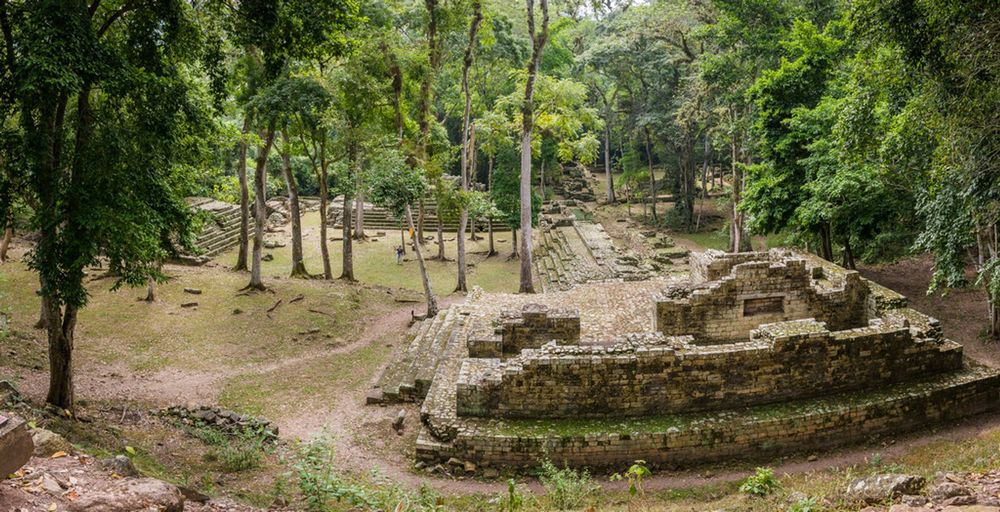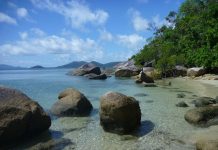In a pretty valley in Honduras’ western extreme lie the Ruins of Copan. The subject of exploration and investigation since the 1830s, archaeologists are digging deep into its massive temples, uncovering an intriguing buried dynasty. Their remarkable discoveries represent a Maya resurrection, and have made Copan the most thoroughly researched and understood of all Maya sites.
Since their emergence around 2,000 BC, the Maya developed into the New World’s most sophisticated ancient civilization, a society of scientists, skilled architects and sculptors, fierce warriors, and a ruling class that raised enormous temples to honor the lives and achievements of their kings. Representing the southeast limit to the spread of the Maya world, the city-state of Copan became the Maya’s crowning artistic achievement, the cultural apex of Maya civilization. Leader among all Maya cities in terms of quantity and quality of stone sculpture, it has been dubbed the Athens of the New World.
The key to understanding Copan is a large, square block of carved stone known today as Altar Q. This altar depicts sixteen seated men – four on each of its North, East, South, and West sides. These sixteen figures were once thought to be astronomers gathered at an important meeting to adjust the Maya calendar, but we now know that the figures represent the members of a dynastic lineage of 16 kings whose rule spanned nearly four centuries between 426 AD to approximately 820 A.D, Copan’s “golden age”. The stela and temples in Copan were erected to commemorate the accomplishments of this dynasty of kings.
An exploration of the archaeological park begins at the Great Plaza, an expansive, grassy courtyard with a pyramid in the center and tall, standing monolithic “stela” arranged throughout. Most of the glyphs and intricate carvings in the stela and altars refer to one of Copan’s most important figures, 18 Rabbit, the thirteenth king. Considered the King of the Arts, 18 Rabbit is credited with implementing the intricate, high relief style of sculpture for which Copan is famous. He is also responsible for the construction of the famous ball court.
Next to the Great Plaza is the Acropolis, a group of massive pyramidal structures where royal power was once concentrated, and which hold beneath them a wealth of information about Copan’s history. Ascending one structure is the hieroglyphic stairway, the New World’s longest inscribed Pre-Colombian text. Currently, the Acropolis is the site of archaeological research, and evidence of the enormous excavation efforts can be seen at the base of many of these structures. The most impressive substructure discovered here is the Rosalila Temple, and for the first time ever one of the access tunnels has been opened to the public, allowing an archaeologist’s view of a portion of Rosalila. Deeper still, below Rosalila, the Margarita temple is yielding information about the mystery-shrouded early years of the Copan dynasty.
A healthy walk from the Great Plaza and the Acropolis is the Las Sepulturas residential zone. Although far more modest than the Acropolis structures, excavations of these low buildings has provided a wealth of information about the domestic life of the Maya of Copan.
The Copan Sculpture Museum offers a dramatic way to learn about the Copan Maya. Entry to this world class museum is gained by walking into the gaping mouth of a Maya serpent and through a long, dark, winding tunnel, representing both the recent excavated tunnels dug into the Acropolis by archaeologists, and also a symbolic journey into the mythic Maya underworld. Rounding the last bend, the tunnel opens out upon the impressive four-story reproduction of the Rosalila Temple, one of Copan’s most stunning recent discoveries.
Rosalila is the centerpiece of this enormous museum, which houses nearly all of the important original sculptures in the park. All of the stela, altars and even whole facades are being transferred to the museum, to protect them from the erosive effects of rain and solar radiation, and at the same time arranging them together in an easily accessible, well interpreted presentation. The move will not affect the visitor’s experience in the archaeological park because an indistinguishable replica created with molds made from the original replaces every sculpture.




























